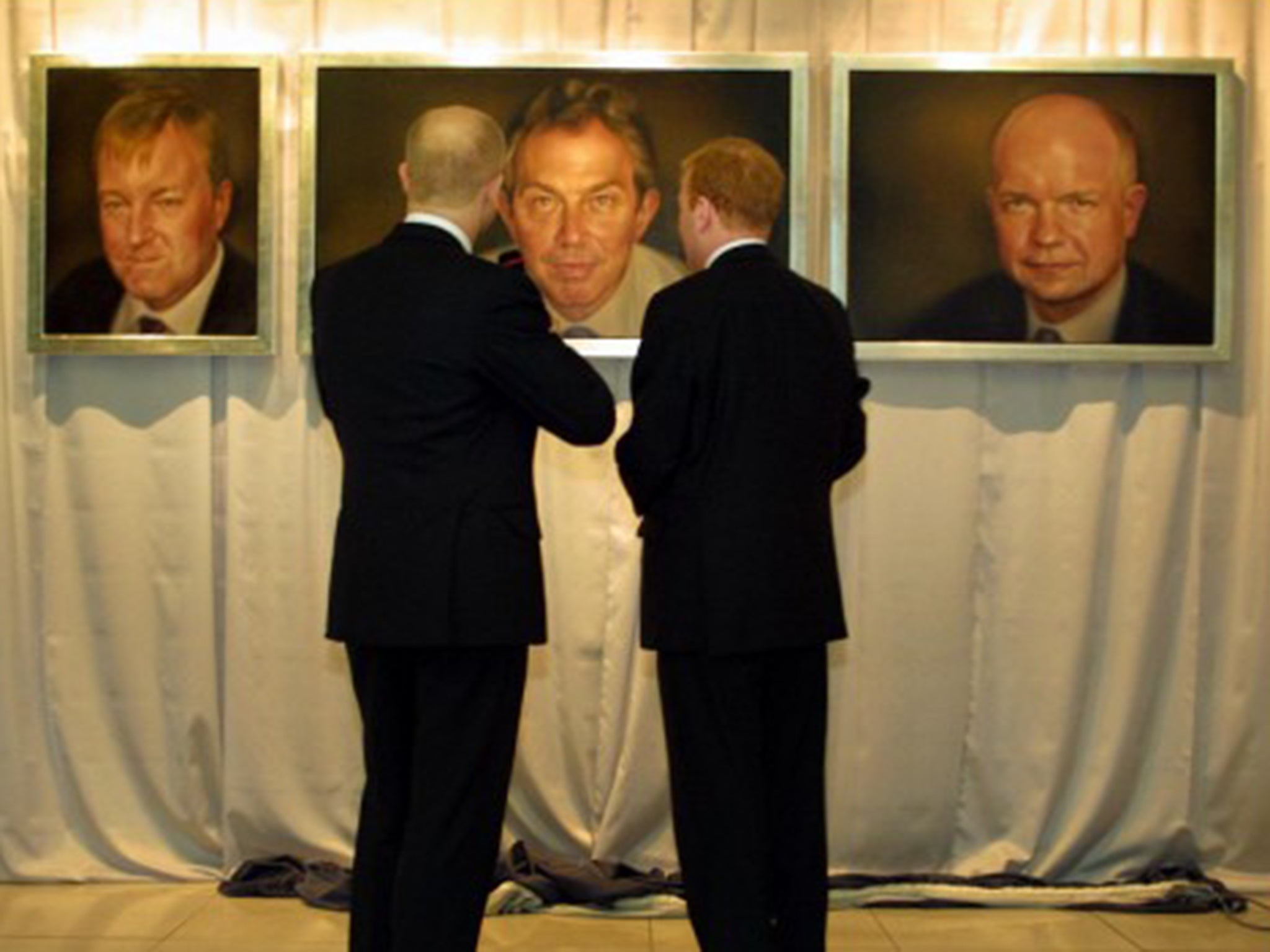PM demurs over portrait: David Cameron has yet to sit for an official painting for the Parliamentary Art Collection
Former leaders Margaret Thatcher and Tony Blair both made the time to sit during their time in office

When David Cameron leaves Downing Street for the last time his face probably won't be quickly forgotten by the British public; but it might not be remembered too well by future generations because, in a break from tradition, he has yet to sit for an official portrait for the Parliamentary Art Collection.
With the general election just over four months away, the Prime Minister has yet to agree a date to sit for his portrait, which is traditionally commissioned by the Speaker's Advisory Committee on Works of Art and hung in Westminster.
The cross-party committee aims to "preserve the history of Parliament through art" by commissioning leading artists to depict politicians through portraiture. In recent years it has turned its focus to "representing the contributions to UK political life made by women", including an award-winning portrait of Labour's Margaret Beckett, but it has so far been unable to secure a portrait of the current Prime Minister.
Former PMs Margaret Thatcher and Tony Blair both made the time to sit for a portrait during their time in office; but like his former rival Gordon Brown, Mr Cameron seems reluctant to set time aside for an artist to capture his likeness.
His apparent hesitancy follows fierce criticism last year when it emerged that since 1995 the committee had spent £250,000 of public money on what critics labelled "an expensive vanity project" for parliamentarians. This included £10,000 on a portrait of Work and Pensions Secretary Iain Duncan Smith, and a statue of Margaret Thatcher costing £11,750.
Following the row last January, Harriet Harman, Labour's deputy leader, pulled out of a planned portrait amid reports that she viewed the project as inappropriate in the straightened economic climate; and Deputy Prime Minister Nick Clegg was forced to deny claims that he had co-operated with the project.
Despite the recent unwillingness of senior politicians to co-operate with artists and the committee plus a budget cut of around a third since 2009, the body insists that the parliamentary collection is a valuable national asset.
"The Parliamentary Art Collection at the House of Commons records those who have made a significant contribution to UK political life over the centuries," said a spokesperson. "Parliament is a changing institution and the cross-party Speaker's Advisory Committee on Works of Art has worked hard, since it was established in the 1950s, to develop the collection."
The apparent decline of this tradition has also pitted leading artists and art critics against each other. Brian Sewell, the art critic and media personality, said: "Most contemporary portraits are awful bits of flattery that don't tell the truth about politicians.
"What is the point in employing portrait painters, who can charge up to £30,000, when you can get a photograph for next to nothing? These self-important people are being sensible in not wanting to be painted."
But Henry Mee, whose 1992 portrait of Margaret Thatcher is included in the Parliamentary Art Collection, defended portraiture as "part of the human condition".
He said: "I don't think portraiture will ever truly decline. People still want this considered approach with longer observation, rather than what photography may be able to deliver in a second.
"By hanging portraits of these figures in Portcullis House, we're saying: 'These people have served our county and you may agree with their political persuasion or you may not but they have still sought to make the world a better place.' "
He added: "I don't think it's a bad thing for society; I think it's a good thing. We can learn a lot from the countenance of others."
Subscribe to Independent Premium to bookmark this article
Want to bookmark your favourite articles and stories to read or reference later? Start your Independent Premium subscription today.

Join our commenting forum
Join thought-provoking conversations, follow other Independent readers and see their replies